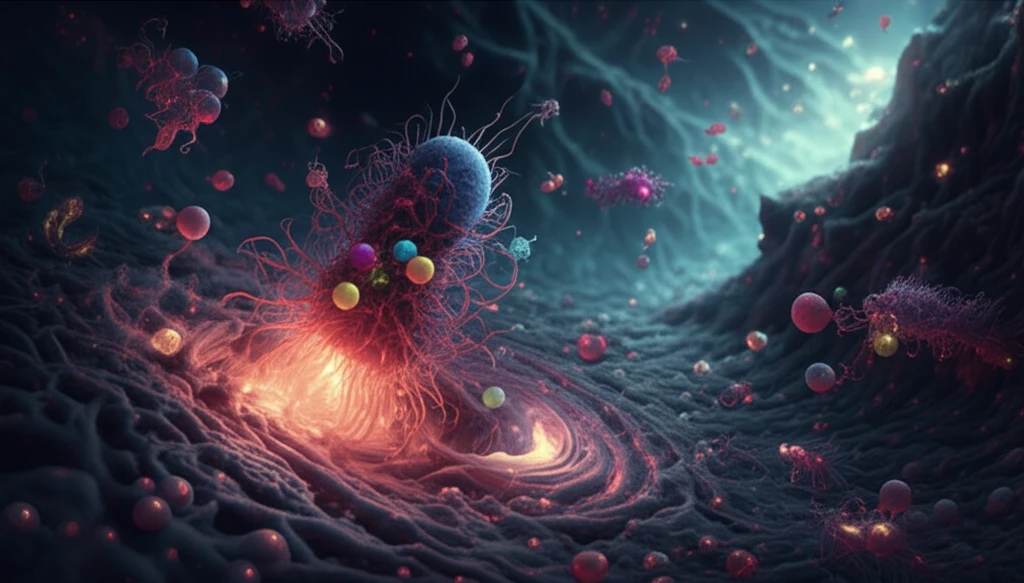
Unlocking the Secrets of Algae: How Marine Bacteria Hold the Key to Future Algal Bloom Control
"Discover the groundbreaking research uncovering how algicidal lactones produced by Roseobacter bacteria can combat harmful algal blooms, offering a sustainable approach to marine ecosystem management."
Marine ecosystems are intricately balanced, with bacteria and algae playing crucial roles in the web of life. Among the most abundant marine bacteria are those belonging to the Roseobacter clade. These bacteria aren't just passive inhabitants of the ocean; they actively interact with their environment, especially with algae, which form the base of many marine food chains. This relationship is particularly evident during algal blooms, where Roseobacters thrive, influencing the bloom's life cycle.
Algal blooms, sometimes massive, impact marine life and even the climate. Many algae produce dimethylsulfoniopropionate (DMSP), a sulfur compound that Roseobacters use. When algal blooms die off, bacteria degrade DMSP into other substances, some of which affect the environment and climate. Recent studies have shown that Roseobacters can switch from being helpful to harmful to algae, depending on environmental conditions.
A study published in the 'Beilstein Journal of Organic Chemistry' sheds light on how Roseobacters interact with algae by producing specific chemical compounds. Researchers identified and synthesized several lactones produced by the marine Roseobacter Ruegeria pomeroyi and found that these compounds have a specific algicidal, or algae-killing, activity. This discovery could lead to new ways of controlling harmful algal blooms using natural, biologically based methods.
Algicidal Lactones: Nature's Tiny Defenders Against Algal Blooms

Researchers used advanced techniques to capture and analyze the volatile organic compounds released by Ruegeria pomeroyi. A closed-loop stripping headspace apparatus (CLSA) was used to collect these compounds, which were then analyzed using gas chromatography-mass spectrometry (GC-MS). This method allowed scientists to identify several lactones, a class of cyclic ester compounds, produced by the bacteria.
- Collection: Volatiles from R. pomeroyi cultures captured using CLSA.
- Analysis: GC-MS used to identify lactones based on their mass spectra.
- Synthesis: Reference compounds synthesized to confirm structures.
- Enantioselective Analysis: Special synthesis used to determine the natural lactones' exact composition.
A Natural Solution for a Growing Problem
The discovery of algicidal lactones produced by Roseobacter bacteria offers a promising avenue for managing harmful algal blooms. As our understanding of these natural compounds grows, so does the potential for developing sustainable strategies to protect marine ecosystems. Further research will focus on marine algae, including those that form harmful blooms, to fully understand the ecological significance of these bacterial lactone producers. This could pave the way for innovative solutions that harness the power of nature to combat environmental challenges.
